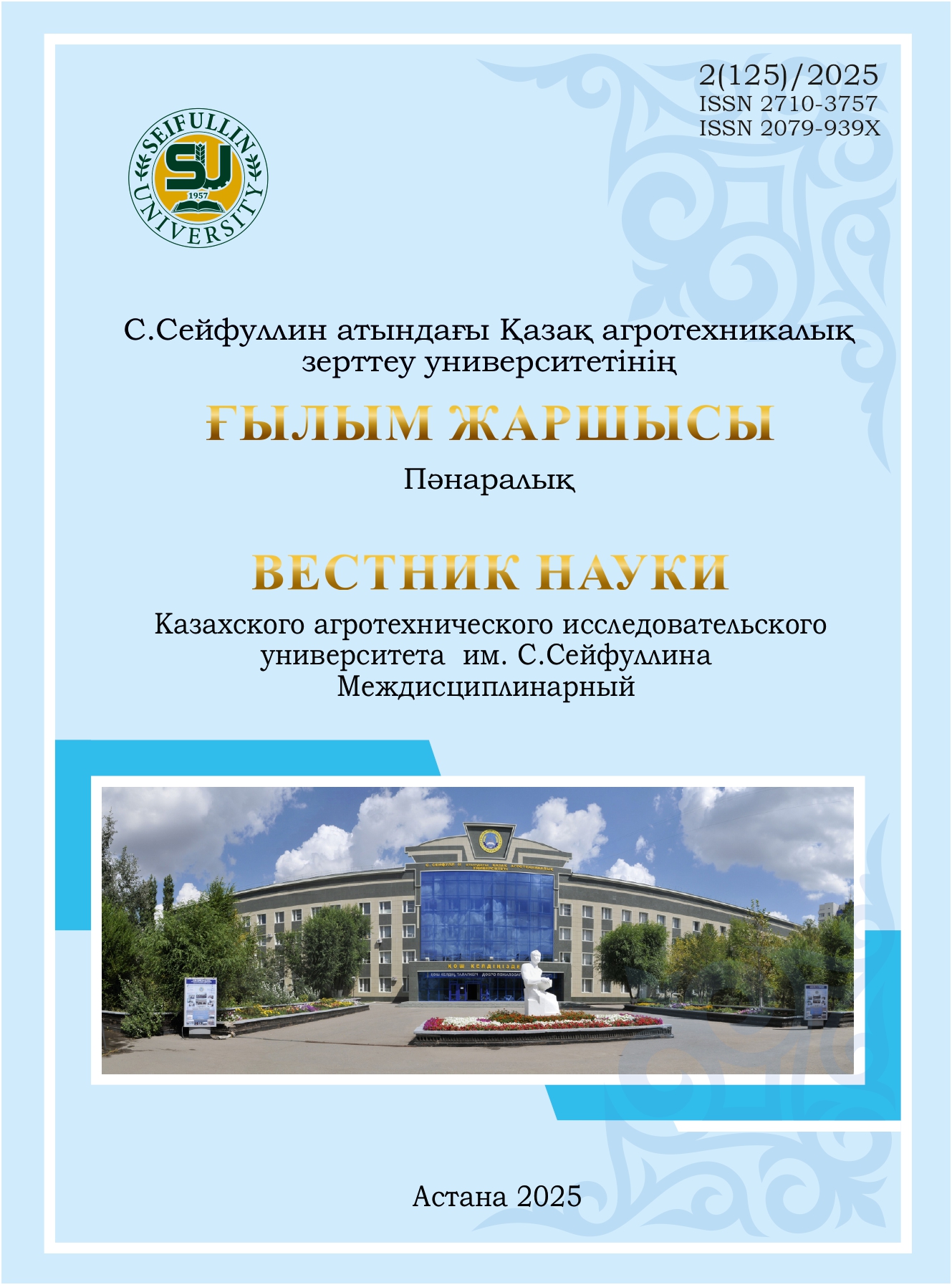Intoxication by nitrogen compounds in sturgeon juveniles grown in recirculation aquaculture system
DOI:
https://doi.org/10.51452/kazatu.2025.2(125).1896Keywords:
sturgeon; intoxication; nitrogen compounds; RAS; nitrification.Abstract
Background and Aim. Studies conducted in recirculation aquaculture system (RAS) show that the immunity of juvenile sturgeon can vary significantly depending on several factors, including water quality, housing conditions, nutrition, and stress levels. Juvenile sturgeon are more vulnerable to disease and intoxication than adults, and their immune systems are still developing. The aim of this research was to study the intoxication of juvenile sturgeon by nitrogenous compounds, such as ammonia, nitrites and nitrates, which are formed during fish metabolism and pose a significant threat.
Materials and Methods. Materials for the study included juvenile sturgeon grown in a RAS (Acipenser baerii and Acipenser Gueldenstaedtii) and recycled water samples from ponds 3, 1 and 8 where the juveniles were reared. During the study, the following methods were used: clinical examination of individuals exhibiting physiological deviations, pathoanatomic autopsy of dead sturgeon specimens, and toxicological analysis of pathological material and recycled water using ultrasound, with results compared to nominal indicators.
Results. The hydrochemical analysis of recycled water in the RAS, revealed a slight deviation from optimal values, although levels remained within maximum permissible concentration. However, juvenile sturgeon can be poisoned even at these levels, because their bodies are very sensitive to minimal changes in the hydrochemical parameters of the water. This was confirmed by the results of clinical examinations, and pathoanatomical autopsies.
Conclusion. Sturgeon are more susceptible to poisoning early in their development because their detoxification systems are less efficient. Water control problems in RAS can be exacerbated by the accumulation of ammonia and nitrite concentrations to toxic levels. Therefore, it is important to closely monitor the recirculating water in RAS.

